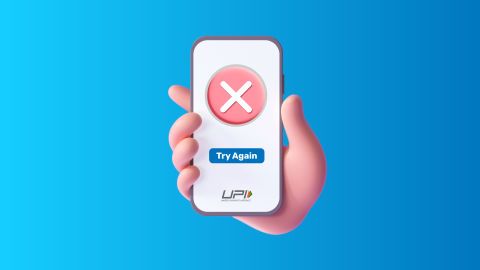Discover how three-phase electricity works, its configurations, and why it’s the preferred choice for industrial power needs. Includes comparisons, applications, and safety insights.
Introduction to three-phase power
-
Electricity is the backbone of modern life. From homes to industries, power keeps everything running. One of the most efficient systems for power distribution is three-phase power. It’s widely used in industries, large buildings, and even some residential setups. Unlike single-phase systems, which are common for small-scale use, three-phase power delivers electricity through three alternating currents. These currents operate at the same frequency but are 120 degrees out of phase with each other, making the system more stable and reliable.
Industries rely heavily on three-phase power for operating machinery like motors, compressors, and pumps. It ensures a smooth power supply, reducing energy losses. For residential users, electricity bills often cover both single-phase and three-phase systems. This is where the convenience of making online electricity bill payments comes into play. Platforms like Bajaj Pay, part of Bajaj Finserv, make it easy to pay your electricity bills securely and quickly. You can learn more about this feature here.Consider Bajaj Finserv for electricity bill payments
Paying electricity bills is now simpler than ever with Bajaj Finserv’s Bajaj Pay platform. Here’s why you should consider it:- Ease of use: Quickly pay bills for three-phase or single-phase connections without hassles.
- Secure transactions: Your payments are protected with advanced encryption.
- Wide coverage: Supports electricity providers across India.
- Rewarding: Enjoy cashback and discounts on bill payments.
What is three-phase power?
Three-phase power is an advanced electrical system where electricity flows through three wires, each carrying alternating current. These currents are staggered by 120 degrees, ensuring continuous power delivery.
This system is especially useful in high-demand environments like industries, where machines need consistent energy. In contrast, single-phase power is better suited for smaller appliances and residential use.Differences between single-phase and three-phase power
Feature Single-phase power Three-phase power Structure One alternating current (AC) phase Three alternating currents, 120° apart Stability Less stable, prone to interruptions Highly stable, smooth power flow Applications Homes, small appliances Industries, large buildings, heavy machines Cost Cheaper for small setups More economical for large-scale use Advantages of three-phase power
- Higher efficiency: Delivers more power without requiring thicker wires.
- Stability: Provides a constant flow of electricity.
- Cost-effective: Reduces energy loss and operational costs.
- Scalable: Perfect for industrial and commercial setups.
- Flexibility: Compatible with heavy machinery and equipment.
Applications of three-phase power in different industries
Three-phase power is integral to industries like manufacturing, transportation, and energy. Here’s how it’s used:- Manufacturing: Powers heavy machines, conveyor belts, and assembly lines.
- Transportation: Drives electric trains and metro systems.
- Energy: Facilitates wind and solar power systems.
- Healthcare: Supports advanced medical equipment and HVAC systems.
How Three-phase power works
Three-phase power generates electricity using three separate waves of alternating current. These waves peak at different times, ensuring a constant flow of energy.
The system relies on a generator that produces three voltage signals, each separated by 120°. This phase difference helps in reducing energy losses and maintaining a steady supply.Types of three-phase power configurations
- Star (Wye) configuration: Common in distribution systems; offers neutral grounding.
- Delta configuration: Used in high-voltage transmission; lacks a neutral wire.
Common equipment using three-phase power
- Industrial motors and pumps
- Elevators and escalators
- Large air conditioning systems
- Renewable energy systems like wind turbines
Safety considerations for three-phase power systems
Safety is crucial in three-phase power systems:- Proper installation: Always hire certified professionals.
- Regular maintenance: Inspect systems for faults.
- Surge protection: Install surge protectors to prevent damage.
- Training: Ensure workers understand system operations and risks.
Future trends in three-phase power technology
- Smart grids: Integration of smart meters for real-time monitoring.
- Energy storage: Advances in battery technology for backup power.
- Green energy: Compatibility with renewable energy sources like solar and wind.
Comparison: Single vs. three-phase power efficiency
Aspect Single-Phase Three-Phase Energy loss Higher Lower Power delivery Limited Continuous Cost More for larger setups Cheaper for industries Importance of electricity payment online
Online platforms simplify paying electricity bills for single-phase or three-phase connections. Here’s why online payments matter:- Convenience: Avoid queues and pay from anywhere.
- Speed: Instant payments with quick confirmation.
- Offers: Avail discounts and cashback.
Conclusion
Three-phase power is the backbone of industrial operations and large-scale electricity distribution. As technology evolves, its integration with renewable energy and smart systems will shape a sustainable future. Making timely electricity payments through platforms like Bajaj Pay ensures uninterrupted service and adds to the convenience of managing power needs.
-
Recharge and Pay Bills
Mobile Prepaid
Mobile Postpaid
Broadband Bill Payment
Electricity Bill Payment
Bajaj Finserv App for All Your Financial Needs and Goals
Trusted by 50 million+ customers in India, Bajaj Finserv App is a one-stop solution for all your financial needs and goals.
You can use the Bajaj Finserv App to:
You can use the Bajaj Finserv App to:
- Apply for loans online, such as Instant Personal Loan, Home Loan, Business Loan, Gold Loan, and more.
- Explore and apply for co-branded credit cards online.
- Invest in fixed deposits and mutual funds on the app.
- Choose from multiple insurance for your health, motor and even pocket insurance, from various insurance providers.
- Pay and manage your bills and recharges using the BBPS platform. Use Bajaj Pay and Bajaj Wallet for quick and simple money transfers and transactions.
- Apply for Insta EMI Card and get a pre-approved limit on the app. Explore over 1 million products on the app that can be purchased from a partner store on Easy EMIs.
- Shop from over 100+ brand partners that offer a diverse range of products and services.
- Use specialised tools like EMI calculators, SIP Calculators
- Check your credit score, download loan statements and even get quick customer support—all on the app.
Frequently asked questions
What is the main difference between single-phase and three-phase power?
Single-phase has one current wave, while three-phase has three staggered waves for continuous energy flow.
Why is three-phase power more efficient for industrial use?
It provides stable power delivery and reduces energy losses, ideal for heavy machinery and equipment.
What are the common applications of three-phase power?
Used in industries, large buildings, renewable energy systems, and advanced healthcare equipment.
What are the safety tips for three-phase systems?
Ensure proper installation, regular maintenance, and use surge protection devices.
How can I pay for electricity online?
Show More
Show Less




